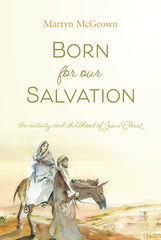Your cart is empty now.

The RCA and CRC Synod’s Working Together
It is the season of Synods and General Assemblies. With this post I call attention to the General Synod of the Reformed Church in America and the Synod of the Christian Reformed Church in North America. I write about the assemblies of these two denominations in one post because they not only held their assemblies at the same time in the same city (Pella, Iowa) but also because they met together in a joint-session.
At the joint-session the representatives adopted this resolution: “the principle that guides us, and the intention that motivates us, is to ‘act together in all matters except those in which deep differences of conviction compel [us] to act separately.’” This resolution was adopted after another important and revealing statement was read at the joint session that explained how much the two denominations are already acting together: “Affirming our relationship of full communion, the exchangeability of ministers of the Word and sacraments between our congregations, and examples of new congregations belonging jointly to both our denominations.” Although the two denominations have not merged yet, they are clearly moving on a path that will likely end with a merger.
This is a movement of great historical significance. The split between the RCA and the CRC was necessary when it occurred in 1857. The issues that divided the two denominations were vitally important. Those who started the CRC rightly found it intolerable that the RCA approved of lodge membership, practiced open communion, and contradicted the Church Order by neglecting the practices of family visitation and regular preaching on the Heidelberg Catechism and by introducing hymns that were not approved by the Church Order. There were some other serious issues that divided the two denominations at the time of the split, but these are sufficient to demonstrate that the church fathers who started the CRC had solid grounds for leaving the RCA.
It is important to understand why the CRC split from the RCA because these reasons are not being discussed in 2014 as the two denominations draw closer to each other. The adopted resolution speaks of “deep differences.” But what are these deep differences? I don’t recall them being mentioned during the joint session that lasted over two hours. Some petty differences were mentioned, such as when a Korean participant explained that he thought the division was mainly due to infighting between Dutch people. If the other delegates disagreed with this analysis they did not voice it, but it was evident that a good number of them found this analysis amusing.
If the split was over trivial matters (such as infighting between stubborn Dutchmen) then it was sinful, which is how the split was characterized during the joint session. Dr. Wesley Granberg-Michaelson, representing the RCA, favorably used a quote from Pope Francis (!) to characterize the division between the two denominations as from the devil. In their comments many of the delegates indicated they agreed the division was unfortunate and sinful.
But the division was NOT sinful, at least not on the part of the CRC in 1857. The CRC of 1857 is to be commended for breaking away from an apostatizing church to begin a soundly Reformed denomination.
The movement of the CRC of 2014 to seek unity with the RCA indicates that it has fallen into the errors of the RCA. The deep differences that divided the CRC and RCA in 1857 don’t exist anymore because the CRC has fallen into the same errors as the RCA. The CRC approves of lodge membership, tolerates the practice of open communion, and neglects regular Heidelberg Catechism Preaching and the practice of family visitation.
If the CRC and RCA were seeking to join together on the basis of the Reformed Confessions, and if their joining together indicated a firm conviction of the truths of the Confessions, it would be worth celebrating. But the closer unity between the RCA and CRC in 2014 is the act of two denominations joining hands as they slide down together into further apostasy.
That the RCA has fallen more deeply into error since 1857 is the reason one of its conservative congregations is seeking to leave the denomination. That congregation is the University Reformed Church, located in Lansing, Michigan and pastored by Rev. Kevin De Young. The congregation voted 282-9 to leave the RCA and join the Presbyterian Church in America. Rev. De Young reports that the congregation still belongs to the RCA and the process of leaving could take 6-8 months. The full explanation for why the congregation wants to leave the denomination is not available. But Rev. De Young provides a brief explanation: “From the adoption of the Belhar Confession, to the removal of the conscience clauses related to women’s ordination, to the growing acceptance of homosexual practice in the denomination, we believe the RCA has changed significantly in the last several years. The denomination has moved away from churches like ours. Our request is that we may be able to move too.”
That the CRC is willing to join hands with the RCA indicates then that it has not only fallen into the errors it repudiated in 1857, but it has also walked almost in lockstep with the RCA in adopting or tolerating its more recent errors. Thus, there is unity between the RCA and the CRC. But it is not unity in the historic doctrines and practices of the Protestant Reformation, which means it is not unity in the truth of Scripture, which means it is not true unity in Christ Jesus.
___________
This article was written by Rev. Clayton Spronk.
The content of the article above is the sole responsibility of the article author. This article does not necessarily reflect the opinions and beliefs of the Reformed Free Publishing staff or Association, and the article author does not speak for the RFPA.

Donate
Your contributions make it possible for us to reach Christians in more markets and more lands around the world than ever before.
Select Frequency
Enter Amount










